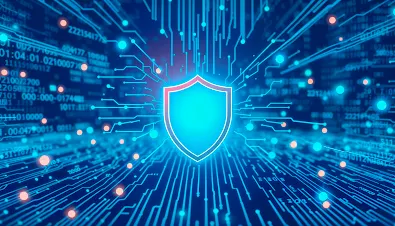Cyberattacks have evolved rapidly in recent years, with hackers constantly seeking new ways to exploit organizations and individuals. Among all forms of cybercrime, ransomware has become one of the most dominant and destructive. Its ability to disrupt businesses, compromise sensitive data, and demand large sums of money has made it a global security crisis. To understand why ransomware holds such a strong grip on modern cyberattacks, we need to explore how it works, why it’s so effective, and what makes it appealing to cybercriminals.
What Is Ransomware?
Ransomware is a type of malicious software that encrypts a victim’s files or systems, making them inaccessible until a ransom is paid. Hackers usually demand payment in cryptocurrencies, which are harder to trace. Victims are often left with two choices: pay the ransom and hope for a decryption key, or risk losing access to critical data permanently.
Unlike other forms of malware, ransomware directly targets what businesses and individuals value most—their data. This makes it more effective in forcing victims to comply with demands.
The Rise of Ransomware
Ransomware attacks have grown sharply over the last decade. Early versions were relatively simple, but today’s ransomware campaigns are far more sophisticated. Attackers now operate like professional organizations, running “Ransomware-as-a-Service” (RaaS) models where criminal groups rent out ransomware kits to others.
The appeal is obvious: ransomware offers criminals a high return with relatively low effort. A single successful attack can generate millions of dollars in profit. In fact, some of the largest ransomware payouts recorded have crossed the $10 million mark, making it one of the most profitable cybercrime methods.
Why Ransomware Dominates Cyberattacks
Several factors explain why ransomware is at the center of modern cybercrime:
1. Financial Motivation
Unlike data theft, which requires finding buyers, ransomware provides immediate revenue. Hackers know that many organizations cannot afford downtime, so they are more likely to pay quickly.
2. Ease of Deployment
Phishing emails, malicious links, and exploited vulnerabilities are all common entry points for ransomware. Attackers don’t always need advanced techniques to succeed—human error and outdated systems often open the door.
3. Global Reach
Thanks to the internet and cryptocurrency, attackers can target organizations anywhere in the world. They can strike across borders without ever leaving their homes, making enforcement difficult.
4. Critical Impact
Ransomware doesn’t just lock files; it shuts down operations. Hospitals, schools, government agencies, and corporations have all been forced to halt services, putting lives and businesses at risk. This pressure increases the chances of victims paying the ransom.
5. Double Extortion Tactics
Modern ransomware groups don’t just encrypt data—they also steal it. They threaten to leak sensitive information publicly if the ransom is not paid. This adds a reputational risk that many businesses cannot afford.
High-Profile Cases
Ransomware has made headlines repeatedly. Incidents like the Colonial Pipeline attack in 2021, which disrupted fuel supply across the U.S., showed how ransomware can cripple entire industries. Other attacks have targeted healthcare providers, law enforcement agencies, and schools, proving no sector is safe.
These events highlight the growing threat, as well as the need for strong cybersecurity defenses.
The Human Factor
One reason ransomware spreads so successfully is human error. Many attacks begin with a phishing email that tricks someone into clicking a malicious link or downloading an infected file. Even with strong technical defenses, one careless moment can open the door to an attack. This makes employee awareness and training as important as technology in fighting ransomware.
Defending Against Ransomware
While ransomware is difficult to eliminate entirely, organizations can reduce their risk significantly by taking proactive measures:
-
Regular Backups: Maintain offline or cloud backups to ensure data recovery without paying ransoms.
-
Patch Management: Keep systems updated to close security gaps attackers exploit.
-
Employee Training: Teach staff to recognize phishing attempts and suspicious activity.
-
Multi-Factor Authentication: Strengthen account security beyond simple passwords.
-
Incident Response Plans: Prepare for potential attacks with clear protocols for containment and recovery.
Final Thoughts
Ransomware dominates modern cyberattacks because it combines profitability, ease of execution, and devastating impact. For cybercriminals, it’s a lucrative business model. For victims, it’s a nightmare that can disrupt operations, cause financial losses, and damage reputations.
The battle against ransomware is ongoing, and while law enforcement agencies continue to crack down on cyber gangs, businesses and individuals must also take responsibility by strengthening their defenses. The best way forward is prevention—investing in security measures and employee education before an attack happens.
Ransomware will likely remain a major threat for years to come, but with awareness and preparation, its impact can be reduced.














